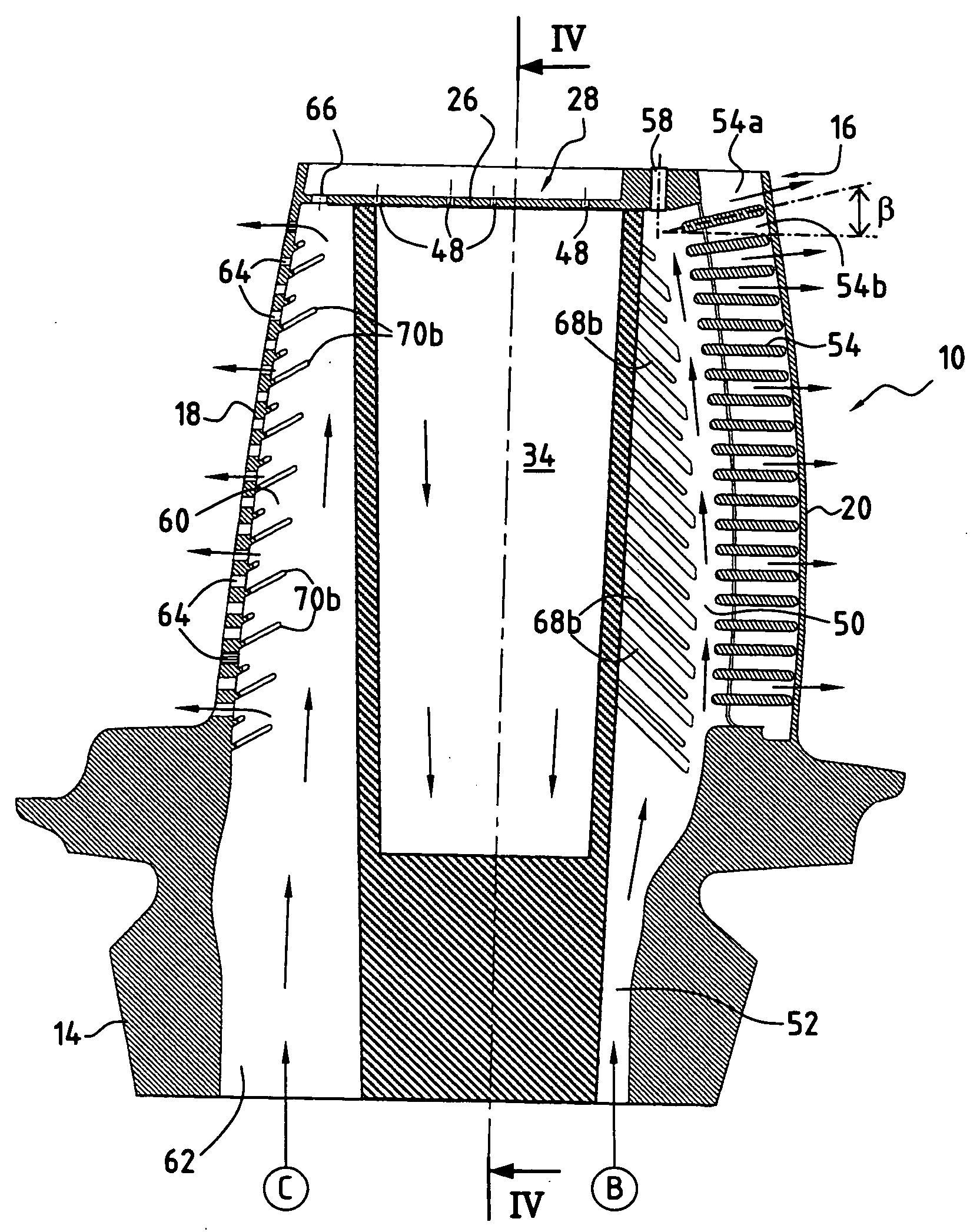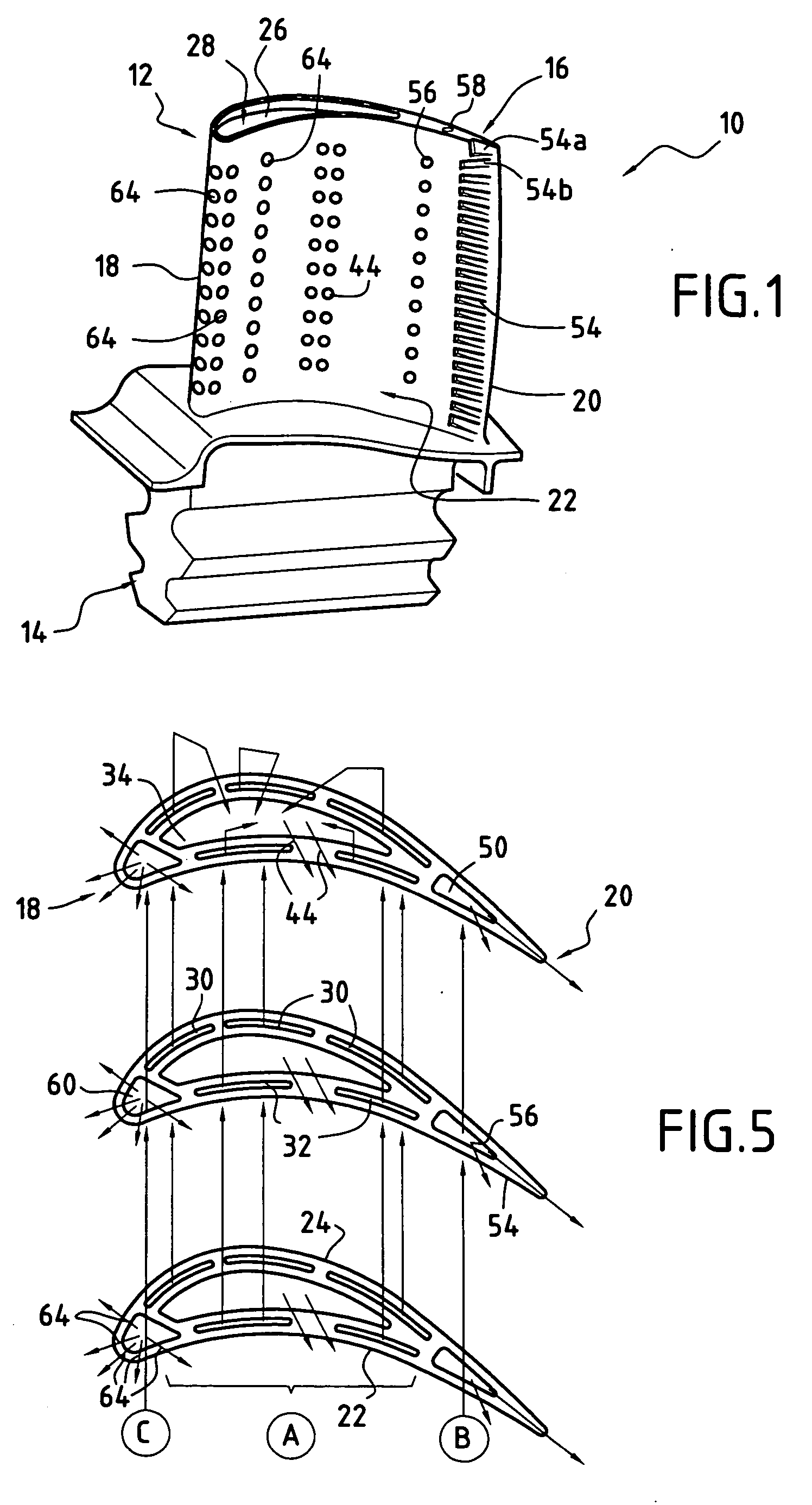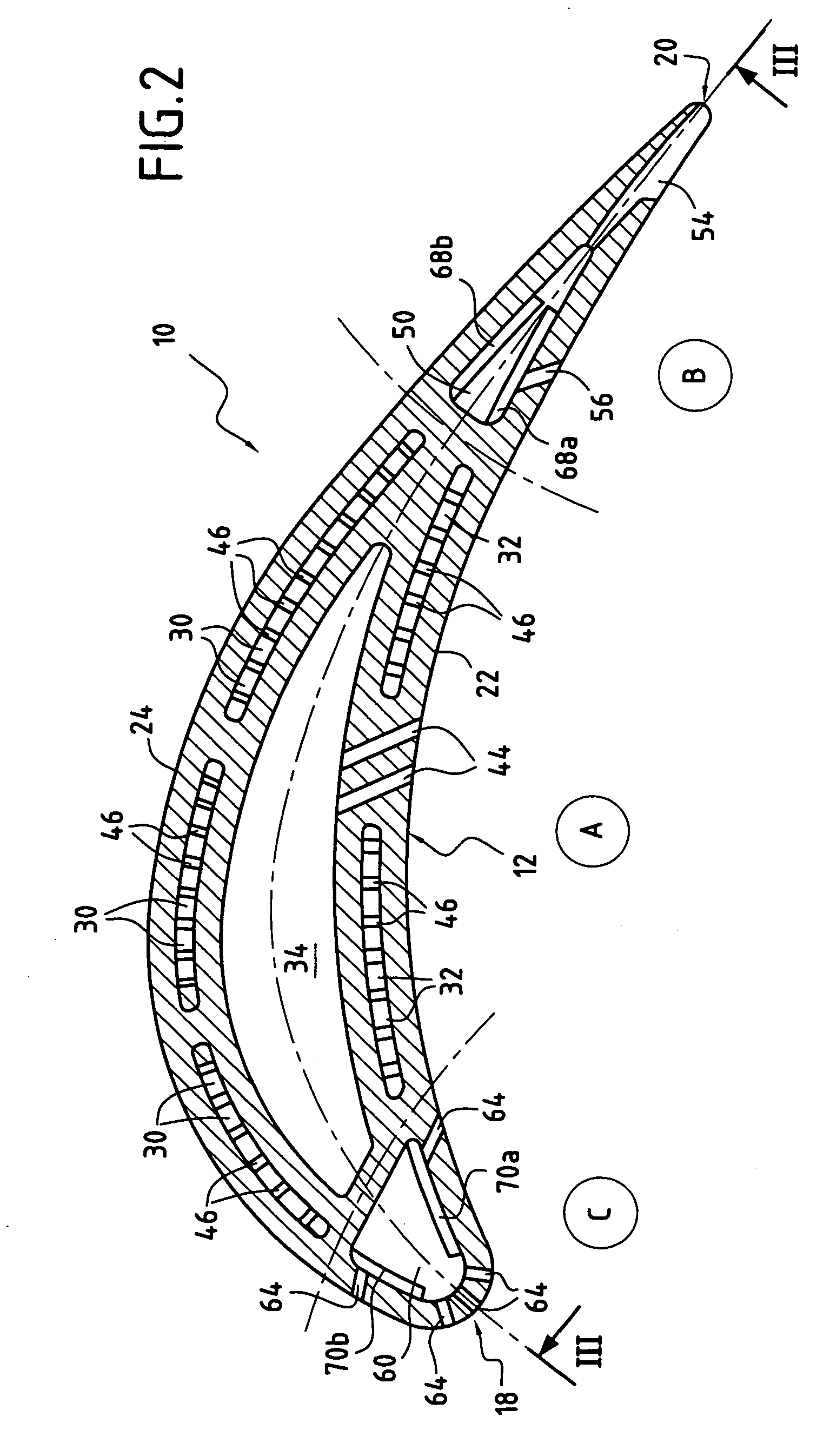Cooling circuits for a gas turbine blade
a technology of cooling circuit and gas turbine blade, which is applied in the direction of machines/engines, mechanical equipment, liquid fuel engines, etc., can solve the problems of limiting the lifetime of said parts and penalizing and achieve the effect of reducing the mean temperature of the blade and increasing the lifetime of the blad
- Summary
- Abstract
- Description
- Claims
- Application Information
AI Technical Summary
Benefits of technology
Problems solved by technology
Method used
Image
Examples
Embodiment Construction
[0021]FIG. 1 shows a moving blade 10, e.g. made of metal, for a high-pressure turbine of a turbomachine. Naturally, the present invention can also be applied to other blades of the turbomachine, whether moving or stationary.
[0022] The blade 10 has an aerodynamic surface 12 which extends radially between a blade root 14 and a blade tip 16. The blade root 14 is for mounting on a disk of the rotor of the high pressure turbine.
[0023] The aerodynamic surface 12 presents four distinct zones: a leading edge 18 placed facing the flow of hot gases coming from the combustion chamber of the turbomachine; a trailing edge 20 opposite from the leading edge 18; a pressure side face 22; and a suction side face 24, these side faces 22 and 24 interconnecting the leading edge 18 and the trailing edge 20.
[0024] At the blade tip 16, the aerodynamic surface 12 of the blade is closed by a transverse wall 26. In addition, the aerodynamic surface 12 extends radially slightly beyond said transverse wall 2...
PUM
 Login to View More
Login to View More Abstract
Description
Claims
Application Information
 Login to View More
Login to View More - R&D
- Intellectual Property
- Life Sciences
- Materials
- Tech Scout
- Unparalleled Data Quality
- Higher Quality Content
- 60% Fewer Hallucinations
Browse by: Latest US Patents, China's latest patents, Technical Efficacy Thesaurus, Application Domain, Technology Topic, Popular Technical Reports.
© 2025 PatSnap. All rights reserved.Legal|Privacy policy|Modern Slavery Act Transparency Statement|Sitemap|About US| Contact US: help@patsnap.com



